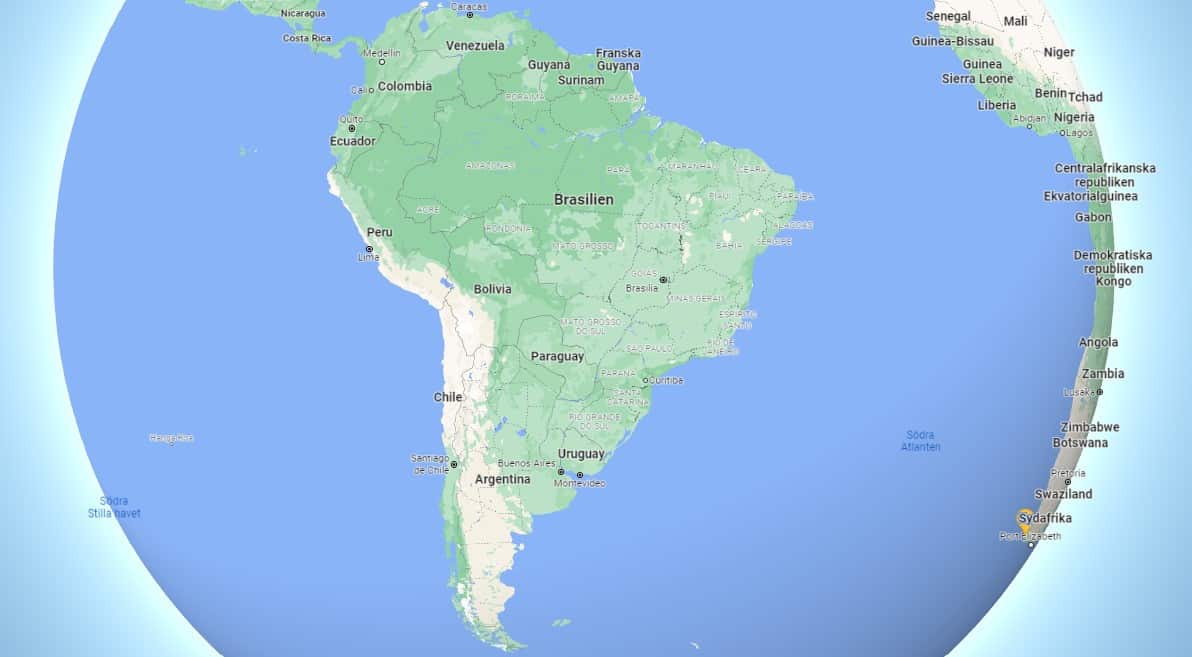As an Amazon Associate, we earn from qualifying purchases. We may also earn commissions if you purchase products from other retailers after clicking on a link from our site.
During our planning to sail around the world, we realized how incredibly expensive it is to pass through the Panama Canal; no big deal, we thought, we would just go around South America; it would give us more adventure for the money. We quickly found out that traveling around the southern tip of America is not a simple feat. Sailing the Cape Horn (southern tip of South America) is both dangerous and exciting, with many comparing it to climbing Mount Everest.
It takes around 65 days or more to motor sail around South America, including stops at ports. You would travel about 15,987 nautical miles (29,608 km) and undergo the adventure of a lifetime with many stories to tell.
There are also numerous health benefits that come along with sailing around the world, such as agility and motor skills. The remaining article will dive deep and explore the many reasons why people choose to sail around South America, what the benefits are, how long it takes, and explain what supplies you may need and the costs of sailing South America.
How Long Does It Take To Sail Around South America?
Sailing around South America, (from the west side of the Panama Canal to the east side, rounding Cape Horn) will take you around 44 days if sailing at 7.5kts, the trip is 8037nm and very difficult. This excludes any stops for sleep and repairs.
Most sailors also sail during the night so the added time will mainly come from escaping bad weather and taking time on land to recover and prepare the crew for the next stage.
How Long Does It Take To Sail Around South America on a Motor/Cruiseship?
If you travel on a motor ship the amount of time it would take to sail around South America can average anywhere between 22 to 65 days. This may depend on the weather, how many stops you make, and how much fuel you are willing to burn in return for higher speeds.
Modern motor ships will cruise at around 20kts, more than doubling the speed of your average sailboat.
Why Sail Around South America?
Many people choose to sail around South America because they are interested in adventure. Because the waters surrounding this area are so fierce, it is sometimes called the Mount Everest of the ocean.
You may wish to sail around South America because the sights are stunning, and the adventure and stories you come home with are something that you may never experience again. Several people choose to sail these waters because of races or other competitions.
Many sailors died trying to face the raging winds and storms through Cape Horn. The areas heading towards the coastlines may be easier on boats and sailors, but once you reach the tip known as the “end of the world,” you will be faced with more challenging waters.
The cost, accessibility, and experience required are all based solely on your freedom of choice and what you want to accomplish by sailing into Cape Horn.
The Clockwise Route Around Cape Horn
There are a few different routes you could take to sail around South America, but the first decision to make is whether you’re going clockwise (starting on the Caribbean side) or counterclockwise (starting on the pacific side). Let’s discuss the differences.
While Cape Horn is a hazardous area, a clockwise route is recommended by many sailors (due to prevailing winds) to mitigate the risks. This approach usually means:
- Heading upwind and upcurrent from the Caribbean until the eastern tip of Brazil.
- Reaching from Brazil to Beagle channel.
- Upwind into strong winds through the Beagle Channel until Southern Pacific.
- Exiting the Channel and continuing north with favorable winds.
Each route has its dangers and its benefits, both ways are brutal on your boat and your crew.
The Counter Clockwise Route Around Cape Horn
If you decide on going counterclockwise, maybe because you already are on the west side, then this is what you will probably experience:
- Upwind and probably motoring most of the way, the west coast of South America is beautiful but the last 100 miles or so can be very demanding as the weather starts getting colder and harsher. Take a look at the picture of the prevailing winds and you will understand why.

The Offshore Alternative Heading Counter Clockwise
If you are comfortable with long offshore passages and don’t mind visiting French Polynesia, then there is an option for you. This option includes many many more miles (you are basically heading for Australia and turning south before you get there) but it does offer some great benefits!
- From Panama to the Marquesas will mainly be with the wind in your back, which is very comfortable if you’re on a catamaran.
- Marquesas to Gambier Islands, same here, still downwind, and the Pacific is called Pacific for a reason.
- Gambier Islands to Puerto Montt, Chile now you have moved enough south to be able to use the trade winds going east, so once again, wind in your back.
- From Puerto Montt it is not far to the Beagle Channel entry, once inside the channel you don’t have many other options adn sailing should be a breeze.
- After exiting the channel, head east to the Falklands, then north east to St Helena and last stop Antigua in the Caribbean.
Starzinger, a very experienced sailor and active cruisers forum member, shares his experiences with this alternative:
” If you are up to or even enjoy pretty long ocean passages, the easiest way is actually counter clockwise “
Estarzinger
Some sailors want to spend months or even over a year away from home and in the ocean.
However, many sailors enjoy a coastal experience rather than heading out into open waters. It depends on your sailing goals and what type of adventure you seek.
The amount of time you spend depends on what type of adventure you want. If you have the time, money, and want to experience different side plans, or if you simply want to spend time on the open sea.
Is Sailing Around South America Worth It?
It may be worth sailing around South America if you seek adventure, have many years of experience in sailing, have the correct equipment, and have the money and time to set sail during the best time of year. Sailing around Cape Horn is not cheaper than going through the canal if accounting for, repairs, fuel, port fees, etc.
Sailing around South America is a difficult journey, and many experienced sailors would recommend using a clockwise route to travel with the wind in your back. However, traveling along coastal lines could be beneficial when it comes to getting help if something goes wrong.
The closer you are to shore, the easier it would be to get help if needed. These waters are well known to sailors as being very difficult to maneuver.
The crushing waves and intense storms make this area difficult even for experienced skippers.
If this is a part of a greater circumnavigation then I suggest you also prepare by reading another article a wrote called How to sail around the world. I also have a list of catamarans suitable for liveaboards and offshore sailing.
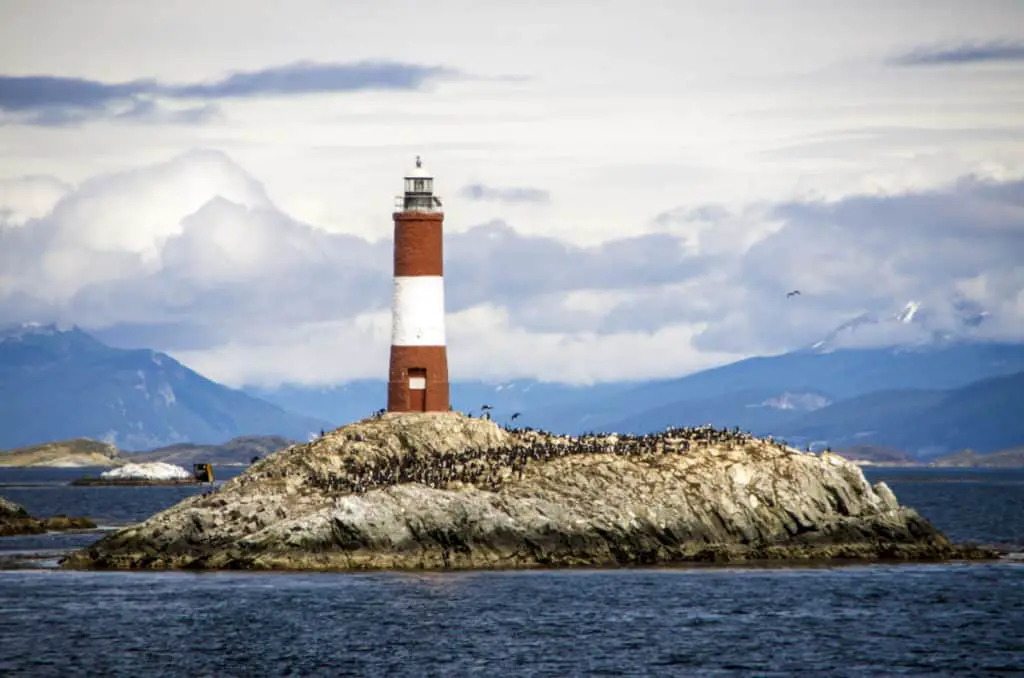
When Should You Sail Around South America?
The best time to sail around South America is December through February. You may experience average temperatures in the daytime of 80°F (26.7°C). But when you travel through Chile, you may experience temperatures in the low 50s and 60s°F (10 and 15°C). The winds are better in the winter but the southern part could be icier than optimal.
As your boat sails through to the Southern tip of South America, the temperatures will get colder, but the waves and waters will be more still. While the waters might be calmer, Cape Horn is where different weather patterns meet, and storms will come unexpectedly.
Comparing Motorships, Monohulls and Catamarans
Sailing is a more personal experience than a cruise ship or any other motorboat experience. When you sail, you use nature to guide you to where you want to go.
A sailing catamaran boat is best for longer voyages such as sailing around South America. You would have more space for living than an average sailboat or motorboat.
Read this article to find some examples of good catamarans for sailing around the world.
However, the best boat for you depends on how long you will be at sea and how long you plan to travel.
If you are concerned about cost, sailing is cheaper than motor ships. You do not need much fuel to run a sailboat, and if you are sailing for months at a time, this might be the best bet for you and your circumstances.
Here is an article I wrote on How much it costs to live on a sailboat, it’s way more than you think!
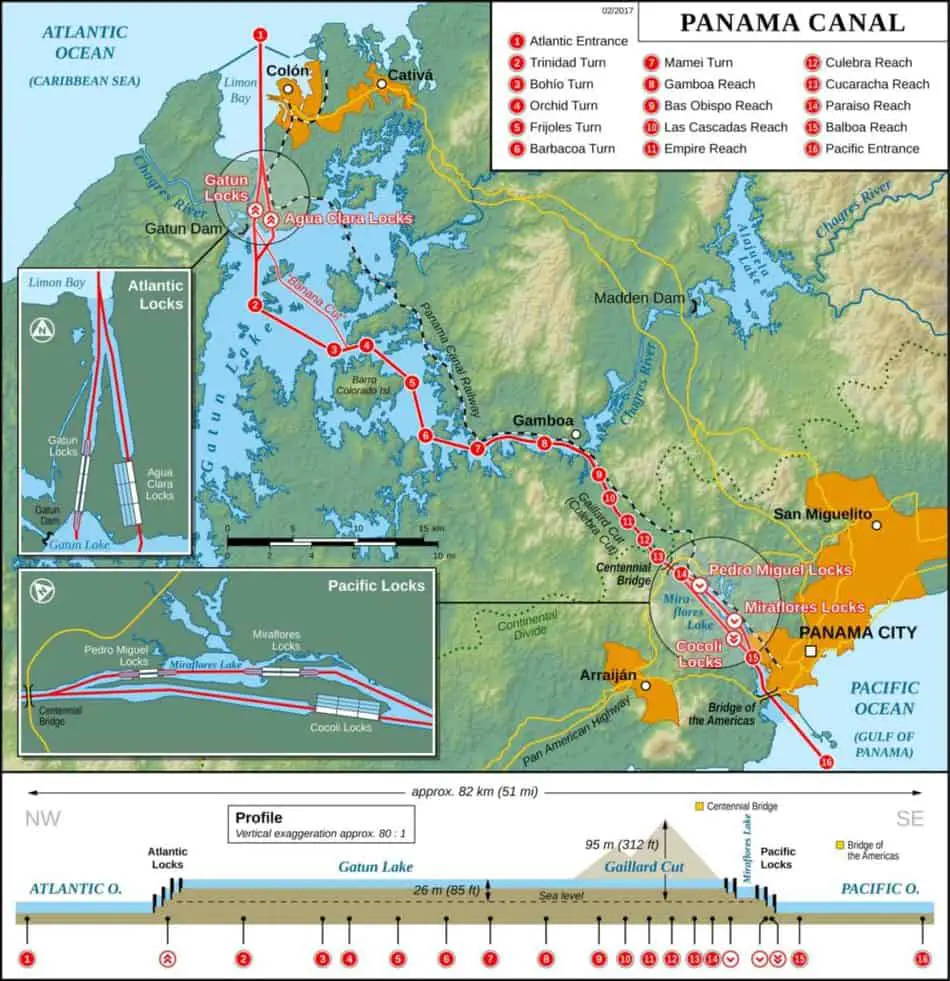
How Much Faster Is It To Sail Around South America Than Going Through the Panama Canal?
If you decide to sail around the world, you may take the Panama Canal, which is much safer and faster than going down to the end of the world. If you seek a less adventurous and safer experience, taking the Panama Canal would be much better for you.
It is not faster to sail around South America than through the Panama Canal. Actually, it is faster to use the Panama Canal, as you will shorten the voyage by around 8,000 nautical miles (14,816 km) if you are sailing through the canal.
It is also much less dangerous because you don’t have to round Cape Horn, one of the most hazardous Capes in the world.
The length of the Panama Canal is about 40 miles (64 km) and about 50 miles (80 km) from deeper waters. You can still experience a wide range of scenery and oceanic adventures while staying safe.
The only real reason you would need to go around Cape Horn is racing or traveling with a veteran sailor who knows precisely what they are doing.
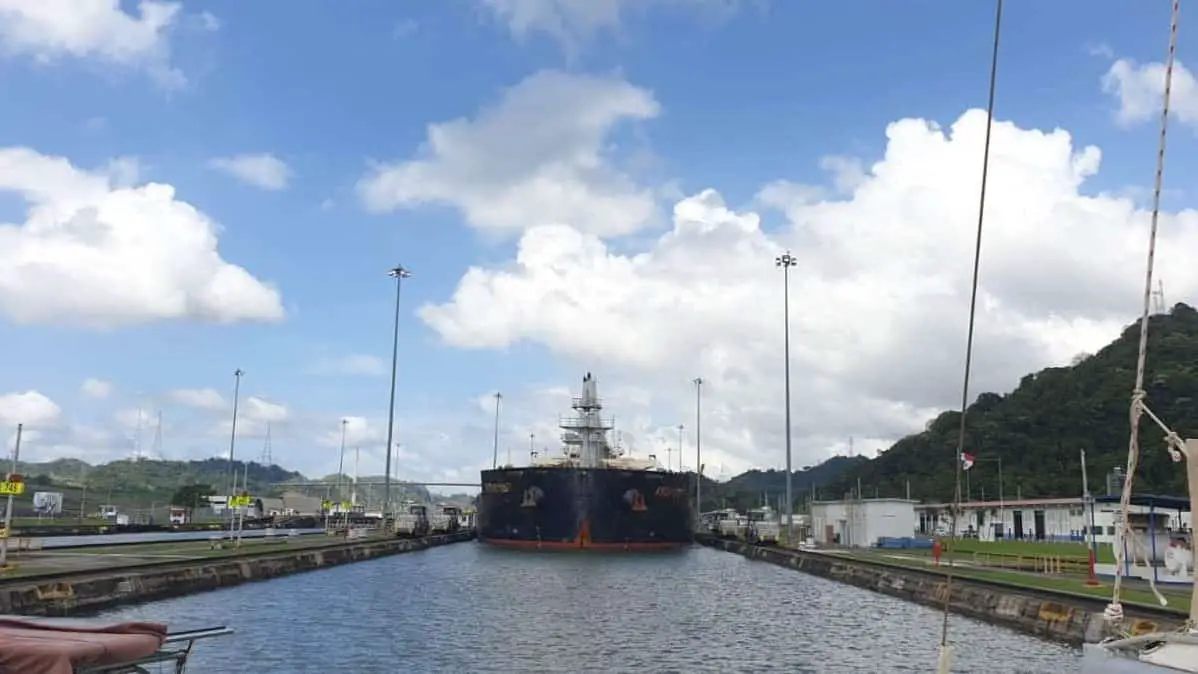
How Much Cheaper Is It To Sail Around South America Than the Panama Canal?
Sailing is sometimes costly and may be expensive depending on where you go and what you do. Besides the supplies you should bring on a long sailing trip, you will also have to spend money on entry fees if you decide to sail through the Panama Canal.
It will cost you more to sail around South America than through the Panama Canal. Sailing through the Canal will cost you somewhere between $800 to $3,200 depending on the size of your boat. There may even be other fees depending on what you bring along with you. But avoiding the canal adds the cost of 43 days of food, fuel, etc.
Because this area is so heavily regulated, you will need to be open and honest with what you are doing, where you are planning to go, and what you are bringing along with you. Fees are expensive, but they may be worth the price if you are concerned about safety.
Danger vs. Expense
Sailing through Cape Horn is dangerous due to the rough seas. You could end up at the bottom of the sea rather than at your destination. But cruising through the Panama Canal is expensive for what you get, so it is up to you whether or not the price is worth the safety.
It should also be mentioned that the Panama Canal is not without risks, more on that here.
If you plan on a long cruise without much intervention from official regulations and are also seeking the adventure of a lifetime, then going around Cape Horn may be right for you. Be diligent and aware of the dangers when sailing through the area.

What Supplies Are Necessary To Sail Around South America?
If you decide that sailing around South America is what you long for as a sailing adventurer, and you’re ready to begin planning your ocean voyage, there are some supplies you should consider before venturing out into open waters.
To sail around South America, you will need a bluewater sailboat, the money to travel, the correct paperwork, and training such as mental and safety. You will also need the right equipment, such as a satellite phone and autopilot. Finally, the boat should be set up for singlehanded sailing.
Once you have gotten the supplies you need, you should be aware of the dangers associated with Cape Horn. The area is remote, and many choose to sail through the Panama Canal instead of Cape Horn because it is safer, although more costly.
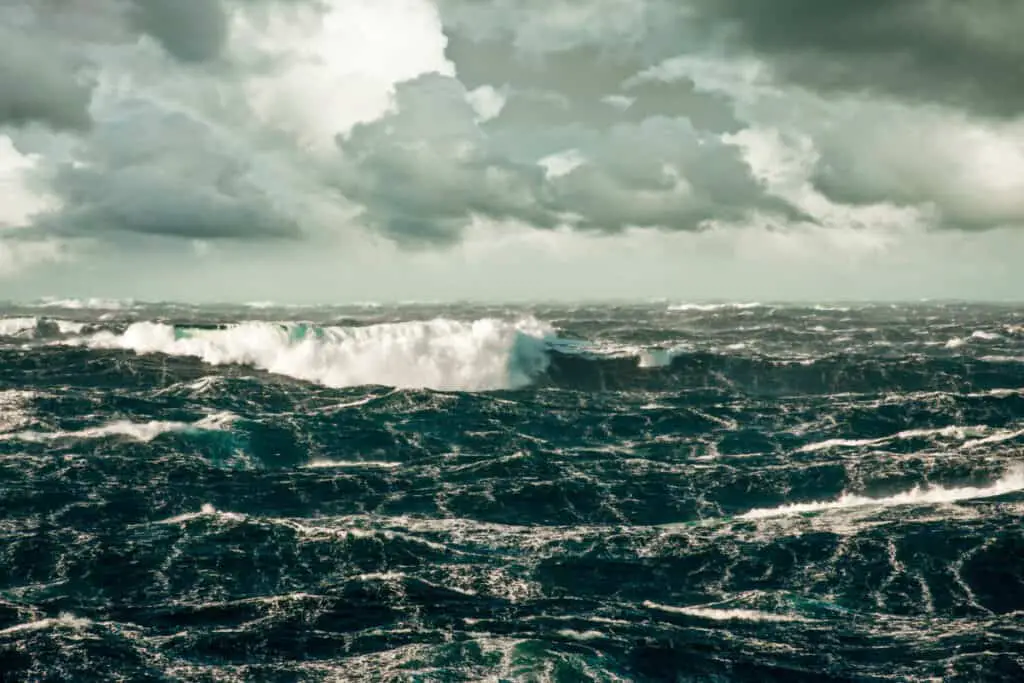
Is Sailing Around South America Dangerous?
For adventure sailers, the idea of sailing around South America is considered one of the most challenging areas to sail. There are routes that sailors can take to experience less treacherous waters, but Cape Horn is one of the most complex and dangerous Capes to sail.
South America is one of the most dangerous routes to take when sailing. The waters are treacherous, and people lose their lives each year during races and adventure sailing in these risky waters.
These waters are no easy feat for even the most experienced sailor and should be considered dangerous and unpredictable. The waves are enormous, and the weather is challenging to plan around.
Cape Horn in Southern Chile is also sometimes referred to as “the end of the world,” as it is the point where the Atlantic and Pacific Oceans meet. Low-pressure systems race across the sea, creating hazardous wind gusts known as Williwaw winds.
These strong gusts are random and happen suddenly and unpredictably. Because of this, Cape Horn is one of the most dangerous adventures that sailors would take.
Conclusion
If you decide that sailing South America is on your bucket list and something you have your heart set on, you should be prepared and ready to take on intense storms, large waves, and unpredictable sailing.
Pick the correct route and apply safety measures the best you can.
South America is gorgeous and brings many sailors to its waters because of the adventure it can offer. With these adventures come excitement but also danger. Be sure you have the experience and know-how to travel these dangerous waters before you set sail into the open sea.

